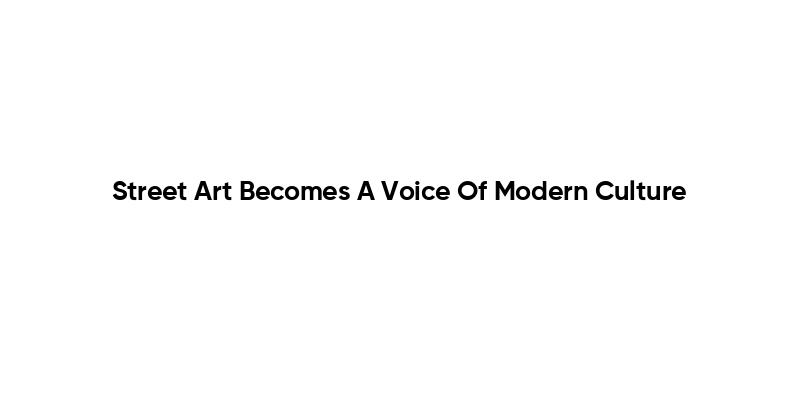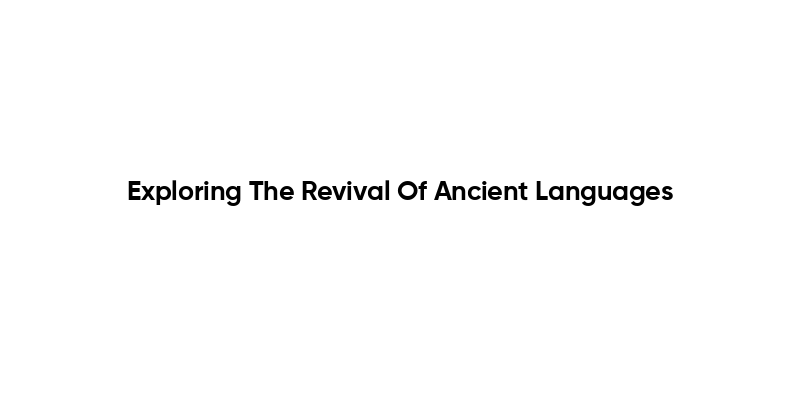Mary Magdalene is one of the most enigmatic figures in Christianity, often surrounded by controversies that have shaped her legacy through centuries. As the first person to witness the resurrected Christ, her role cannot be understated; yet, Mary Magdalene’s history has been muddled by misinterpretations, including claims of her being a sinner or a repentant prostitute. These misconceptions largely stem from papal doctrines and misreadings of scripture, like those propagated in the Mary Magdalene controversies. Today, feminist interpretations have reexamined her narrative, highlighting her significance as a leader and teacher within early Christianity, especially as revealed in texts such as the Gnostic Gospels. Further connections to figures like Mary of Egypt enrich our understanding of female representations within biblical history, illustrating the complex landscape of women in scripture.
The discussion surrounding Mary Magdalene invites a deeper exploration into her multifaceted identity as a pivotal woman in Christian history. Known also as the apostle to the apostles, she stands at the crossroads of various theological interpretations, from orthodox views to her portrayal in apocryphal texts. The interplay of Mary Magdalene’s relevance with figures such as Mary of Egypt reveals rich cultural narratives of femininity, sin, and redemption. With references found in the Gnostic Gospels, her story intertwines with themes of empowerment and transformation that resonate with modern feminist discourse. Whether one views her as a saint or a misunderstood outcast, the multiplicity of Mary Magdalene’s character speaks volumes about the broader issues of women’s roles in religious teachings.
The Controversial Legacy of Mary Magdalene
Mary Magdalene is a pivotal and controversial figure in Christianity, often debated in terms of her role and significance within the biblical narrative. Is she to be viewed primarily as a devoted follower of Jesus, or does she embody a more complex identity shaped by centuries of misinterpretation and reinterpretation? This dichotomy is evident in the vast scholarship surrounding her, particularly in relation to the ancient texts and the influence of Gnostic Gospels. These texts offer alternative views of Mary Magdalene, situating her as not only a witness to the Resurrection but also as a key figure in the early Church, challenging the patriarchal foundations that sought to diminish her role. In fact, as scholars delve deeper into the Gnostic Gospels, they reveal a Mary who is revered as a teacher and a bearer of secret wisdom—a stark contrast to the more orthodox portrayals influenced by early Church fathers like Pope Gregory, who mischaracterized her as a mere sinner.
Additionally, Mary Magdalene’s narrative has been heavily influenced by feminist interpretations that seek to reclaim her agency and significance. Scholars have criticized the historical conflation of Mary Magdalene with other women named Mary in the New Testament, which has contributed to a muddled understanding of her identity and impact. For instance, the misunderstandings surrounding the depiction of Mary as a prostitute can be traced back to biblical misinterpretations, which have persisted across generations. This has led to a feminist reassessment of Mary Magdalene, highlighting her role as an apostle and her importance in the context of women’s voices in early Christianity, ultimately aiming to reposition her within a more accurate historical and theological framework.
Feminist Reinterpretations of Mary Magdalene
The feminist interpretations of Mary Magdalene profoundly reshaped our understanding of women’s roles within Christianity. By advocating for her recognition as a central figure rather than merely a supporting character, feminist theologians challenge the long-standing narratives that marginalized women’s experiences and contributions within religious contexts. They argue that Mary Magdalene’s experiences, including her role as the first witness of Jesus’ Resurrection, signify not just faithfulness but also a profound theological authority that deserves recognition and respect. This perspective redistributes theological power, bringing attention to the often-overlooked voices of women in scripture, thereby asserting that women’s insights into spirituality and leadership are both valid and essential to the Christian faith.
Feminist theology further connects Mary Magdalene to other biblical figures, such as Mary of Egypt, who also symbolizes redemption and transformation. Both women are seen as representations of the broader struggle for women’s identity and recognition in a predominantly patriarchal society. By exploring the historical and cultural implications of their narratives, scholars argue that there is an inherent connection between their stories, reinforcing the notion that women’s experiences of faith, sin, and redemption can provide critical insights into the nature of spirituality itself. Such interpretations challenge conventional views and invite a reevaluation of women’s spiritual authority throughout history.
Exploring the Gnostic Gospels and Mary Magdalene’s Teachings
The Gnostic Gospels present a radically different view of Mary Magdalene, positioning her not only as a follower of Jesus but as a critical teacher who possesses unique insights. For example, the Gospel of Mary highlights her role as a confidant who receives secret teachings from Jesus, emphasizing her spiritual depth and understanding. This perspective contrasts sharply with traditional gospel narratives that often minimize women’s roles. The exploration of these Gnostic texts reveals that early Christian communities recognized the potential for female leadership, challenging the narratives that have sought to erase or diminish that possibility. Remarkably, these texts suggest that Mary Magdalene was seen as a beacon of spiritual enlightenment, unearthing a rich tapestry of understanding that invites deeper collective reflection on the role of women in early Christianity.
Furthermore, the teachings attributed to Mary in Gnostic texts reflect a more inclusive approach to spirituality, one that embraces direct experience and personal understanding of the divine. Instead of portraying faith as reliant solely on male interpretation or ecclesiastical authority, these Gospels suggest that each individual, particularly women, can access their spiritual truths directly—an empowering notion that resonates deeply in contemporary religious discourse. This revelation offers a fresh understanding of Mary Magdalene’s contributions to theological thought, demonstrating her profound impact on the fabric of early Christian beliefs and thereby calling for a broadening of the conversation surrounding gender in matters of faith.
Mary Magdalene’s Historical Context and Misidentification
Mary Magdalene’s story is further complicated by her historical context, where she is often misidentified or conflated with other biblical figures, such as Mary of Bethany or Mary of Egypt. This blending of identities contributes to the confusion surrounding her role in the New Testament and highlights the need for careful textual analysis to disentangle her narrative from those of others. The assumption that she bears the burden of sinful associations—a misinterpretation that stems largely from Pope Gregory’s sermons—has colored perceptions of her for centuries. Understanding the historical landscape in which these narratives developed is crucial for accurately assessing Mary’s significance and influence in early Christianity.
Moreover, Mary Magdalene’s connection to figures like Mary of Egypt serves as a reminder of the diverse representations of women within Christian tradition. Both women embody themes of repentance, transformation, and the call for personal faith journeys—a concept that resonates strongly in contemporary spirituality. As scholars delve deeper into these intersections within biblical texts, they highlight the importance of reclaiming lost histories and narratives that showcase the multifaceted nature of women’s experiences in religious contexts. By doing so, they encourage a reexamination of the biblical canon and its portrayals of female characters, ultimately enriching the overall understanding of the role women have played and continue to play in spiritual life.
Artistic Representations of Mary Magdalene
The artistic representations of Mary Magdalene throughout history reveal much about societal attitudes towards women and spirituality. Notably, during the Renaissance, artists often depicted her as a penitent figure, aligning with the narrative established by Church fathers that emphasized her sinful past. This portrayal often emphasized themes of redemption but also reinforced stereotypes about women’s sexuality and morality. Artists such as Titian and Caravaggio showcased Mary Magdalene in a light that both celebrated her as a saint and objectified her as an archetype of femininity, reflecting the complex relationship between divine grace and human fallibility in their depictions.
However, these representations have also left room for reinterpretation and critique. Modern scholars and feminist theologians argue that such depictions must be understood through the lens of the broader historical and cultural context in which they were created. They emphasize the need for a more nuanced understanding of Mary Magdalene, one that transcends the simplistic narratives of sin and redemption. By reevaluating these artistic portrayals, we can uncover deeper meanings that speak to the evolving perspectives on gender and spirituality throughout history, illuminating how faith intersects with artistic expression and societal norms.
Mary Magdalene and Her Connections to Mary of Egypt
The intriguing connections between Mary Magdalene and Mary of Egypt provide fertile ground for exploring women’s narratives within Christian tradition. Both women exemplify themes of sin, redemption, and spiritual transformation, albeit through very different cultural lenses. While Mary Magdalene is often viewed through the prism of her relationship with Jesus and her mischaracterization as a prostitute, Mary of Egypt’s story emphasizes her ascetic lifestyle and personal repentance in the desert. This parallel highlights the varied ways in which women have navigated their spiritual journeys and the paths they took towards salvation and enlightenment.
In re-examining these figures’ intertwining legacies, scholars invite today’s readers to reflect on the broader implications of their stories. The connections foster a dialogue about how feminine experiences have been portrayed across time and scripture, revealing the richness of women’s spirituality. As religious narratives evolve, the rediscovery of figures like Mary of Egypt alongside Mary Magdalene offers opportunities to challenge historical narratives and reclaim women’s stories, emphasizing the diverse pathways women have undertaken to engage with the divine throughout history.
The Significance of Mary’s Tears: A Symbolic Interpretation
In the Gospel of Mary, one poignant moment occurs when Mary weeps, a powerful symbol of her emotional depth and spiritual struggle. This act of crying serves not only as an expression of personal grief but also as a catalyst for understanding how her insights were initially challenged by her male counterparts, like Peter and Andrew. Her tears become a metaphor for the emotional labor women endure in spiritual communities, revealing the complexity of their contributions and the often-unrecognized burdens they carry. By analyzing this moment, scholars illuminate the importance of emotional expression in faith, particularly for women, whose feelings and experiences have historically been marginalized.
Furthermore, this narrative of tears invites contemporary readers to consider the broader implications of emotional expressivity within their spiritual practices. The notion that Mary Magdalene’s tears prompted her disciples to listen suggests that emotional authenticity can bridge gaps between varied spiritual experiences. Thus, her crying is emblematic of the call to embrace vulnerability as a strength, advocating for a spiritual landscape that honors emotions as integral to faith. By situating Mary Magdalene’s tears within her overall narrative, we uncover layers of meaning that encourage deeper compassion and understanding within modern spiritual discourse.
Mary Magdalene and the Quest for Authenticity in Faith
Mary Magdalene’s story raises profound questions about authenticity in faith, particularly in the context of societal expectations and historical misrepresentations. Her journey reflects the struggle to find one’s voice amidst patriarchal narratives that have often silenced or distorted women’s experiences. In examining her life through historical and theological lenses, we begin to understand the deeper truths she embodies—a quest for self-discovery that resonates with many contemporary seekers. This quest for authenticity is essential in spiritual contexts, where the complexity of individual experiences can often be overshadowed by rigid doctrines and traditional interpretations.
Moreover, by centering Mary Magdalene as a figure seeking truth and authenticity, we open pathways for inclusive spiritual practices that embrace diverse expressions of faith. In modern discussions, her narrative encourages individuals to reflect on their unique relationship with spirituality while dismantling historical barriers that seek to define their beliefs. Thus, the exploration of Mary Magdalene as a symbol of authentic faith serves as a call to challenge limitations and cultivate a more expansive understanding of the divine—one that honors individuality and complexity.
The Impact of Mary Magdalene on Modern Spirituality
Mary Magdalene’s influence can be discerned in contemporary spiritual movements that seek to reclaim the feminine aspect of faith. Her representation as a teacher and confidant challenges traditional interpretations of scripture, inspiring modern practitioners to rediscover the role of women in spiritual leadership. Numerous workshops, retreats, and learning circles are now being dedicated to her teachings, signifying a resurgence of interest in reclaiming female figures within religious traditions. This renewed focus invites discussions on how faith practices can evolve to include women’s perspectives and experiences more richly and authentically.
Additionally, Mary Magdalene’s legacy as a symbol of resilience resonates strongly in the context of social justice and empowerment movements. Many spiritual leaders advocate for her recognition as a guiding figure for those confronting oppression and marginalization, as her own journey reflects the struggles of many who have been dismissed or silenced. By championing Mary Magdalene as a metaphor for strength and transformation, modern spirituality encourages individuals to engage with their faith authentically and purposefully, fostering a more inclusive community where diverse expressions and experiences are celebrated.
Frequently Asked Questions
What are the major controversies surrounding Mary Magdalene?
Mary Magdalene is a highly debated figure within Christianity, often at the center of numerous controversies. Historically, she has been misidentified as a sinner, largely due to Pope Gregory the Great’s sermons in the 6th century, which conflated her with other women in the Bible, including a sinful woman who anointed Jesus. Feminist interpretations of Mary Magdalene suggest that she embodies empowerment and is an apostle to the apostles, challenging traditional narratives and highlighting her significant role in Jesus’ life.
How do feminist interpretations view Mary Magdalene?
Feminist interpretations of Mary Magdalene view her as a powerful figure who defies the patriarchal structures of early Christianity. Scholars like Elaine Pagels and Meggan Watterson argue that Magdalene’s friendship with Jesus elevates her to an authoritative role, suggesting she was a teacher and a confidante rather than merely a repentant sinner. These interpretations also highlight her presence in the Gnostic Gospels, where her wisdom and spirituality are celebrated, contrasting sharply with traditional biblical narratives that often diminish her significance.
What is the significance of the Gnostic Gospels in understanding Mary Magdalene?
The Gnostic Gospels, such as the Gospel of Mary, present an alternative view of Mary Magdalene as a key spiritual leader and a close companion of Jesus. These texts, excluded from the Biblical canon, depict her as possessing secret knowledge that challenges the male-dominated narratives of the New Testament. They suggest that Mary Magdalene’s insights and teachings were vital to the early Christian community, showcasing her as an important figure in the development of Christian thought.
What is Mary Magdalene’s historical role in Christianity?
Historically, Mary Magdalene is recognized as a key figure in the New Testament, identified as a witness to Jesus’ crucifixion and resurrection. Her role extends to being the first to proclaim the resurrection to the apostles, which has earned her the title ‘apostle to the apostles.’ However, the limited references to her in scripture, alongside conflations with other figures named Mary, have led to differing interpretations of her importance throughout Christian history.
How is Mary Magdalene connected to Mary of Egypt?
Mary Magdalene is often mistakenly conflated with Mary of Egypt, a separate figure revered for her life of repentance and asceticism. Mary of Egypt is depicted as a former street prostitute who turned hermit, while Mary Magdalene’s narrative has been altered over the centuries by church teachings. This confusion illustrates the broader themes of female representation in Christianity, where both figures symbolize grace, transformation, and the complexities of women’s roles in faith.
What impact did Pope Gregory the Great have on the perception of Mary Magdalene?
Pope Gregory the Great significantly impacted the perception of Mary Magdalene by labeling her a repentant sinner in a series of sermons in 591 AD. His teachings associated her with promiscuity, which subsequently colored her portrayal in Western Christianity for over fourteen centuries. This interpretation has been challenged by contemporary scholars who argue that there is no biblical basis for linking her to sinfulness, allowing modern readers to rediscover her true historical significance.
What are the implications of Mary Magdalene’s portrayal in art and literature?
The portrayal of Mary Magdalene in art and literature has evolved significantly, often reflecting the cultural attitudes towards women and spirituality of the time. From the early depictions of her as a penitent sinner to modern interpretations that recognize her as a wise leader, these representations influence contemporary understanding of women’s roles in spirituality. Artists like Donatello and Titian have shaped her image, and their works often embody societal views on repentance, sexuality, and authority.
How do recent discoveries affect the narrative of Mary Magdalene?
Recent discoveries, such as new translations and manuscripts related to Mary Magdalene, have profound implications for her narrative. Findings like the Gospel of Mary and the changes observed in ancient texts suggest that her role has been more significant than traditionally acknowledged. Scholars like Elizabeth Schrader Polczer highlight textual discrepancies that may reflect historical efforts to diminish her influence in early Christian churches, offering a more nuanced understanding of her legacy.
Why is Mary Magdalene considered a patron saint of outcasts?
Mary Magdalene is considered the patron saint of outcasts due to her association with themes of redemption, forgiveness, and social acceptance. Her story embodies the welcoming of marginalized individuals into the fold of the Church, reflecting the transformative power of faith. Through her trials and tribulations, Mary Magdalene serves as a symbol of hope for those who feel alienated or condemned, emphasizing the Christian message of love and acceptance for all.
What role does the Gospel of Mary play in shaping Mary Magdalene’s legacy?
The Gospel of Mary is pivotal in shaping Mary Magdalene’s legacy by presenting her as a figure of spiritual authority and insight. Unlike the canonical Gospels, this text depicts her as possessing knowledge of the divine that challenges established patriarchal structures. It emphasizes her role as a teacher and leader, suggesting that her interpretations of Jesus’ teachings hold equal weight to those of male disciples, thus redefining her impact in early Christianity.
| Key Points | Details |
|---|---|
| Mary Magdalene’s Ambiguity | A central figure controversial within Christianity, often mischaracterized as a sinner and linked to other women named Mary. |
| Role in the Gospels | Present at the Resurrection, commissioned by Jesus to spread the news, demonstrating her importance as ‘the apostle to the apostles’. |
| Feminist Reinterpretation | Feminist scholars argue against traditional interpretations that marginalize her role, claiming her significance in early Christianity. |
| Misrepresentation by Church | Over centuries, Church fathers conflated her identity with other women, labeling her negatively, influencing public perception. |
| Cultural Influence | Constant reinterpretation in art and literature, particularly representations as a penitential figure in the Renaissance. |
| Modern Scholarship | New findings, including alternative gospels and textual analysis, suggest a richer, more complex identity than traditionally attributed. |
Summary
Mary Magdalene stands at the heart of Christendom’s narrative, woven into the fabric of scripture yet shrouded in layers of misinterpretation and misunderstanding. Her role as the first witness to the Resurrection and a proponent of Jesus’ teachings highlights her significance far beyond the labels assigned to her over centuries. By revisiting and reshaping her narrative through feminist scholarship and modern textual analysis, a more nuanced understanding of Mary Magdalene emerges, as she transcends her historical misrepresentations to become a beacon of truth, complexity, and inclusiveness in faith.



